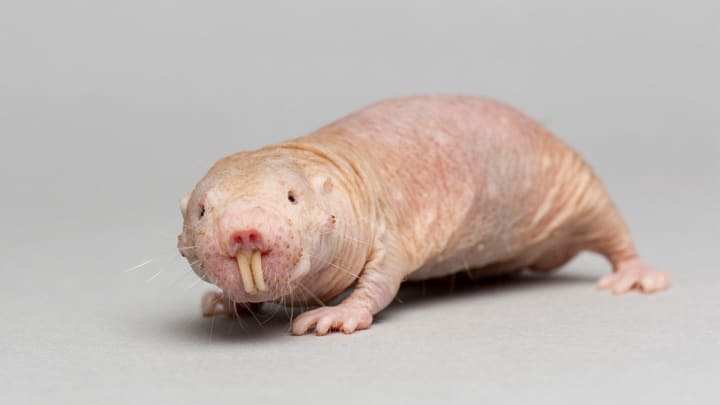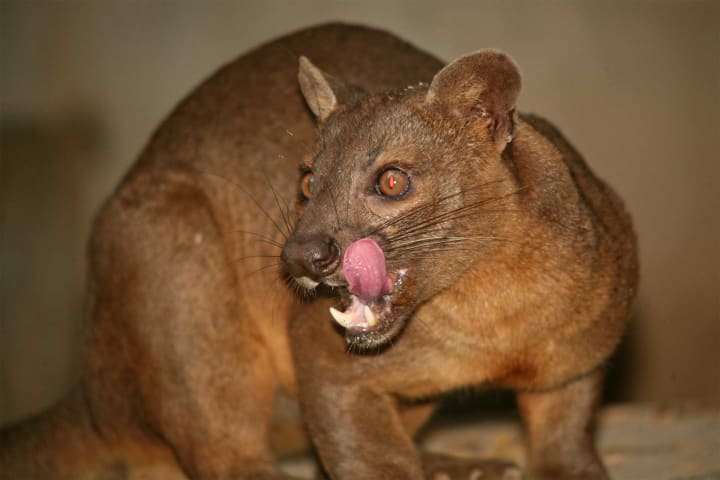10 Weirdest Animals In The World
Here are 10 of the weirdest animals in the world

Here are 10 of the weirdest animals in the world
Here are more detailed descriptions of the 10 weirdest animals in the world:
Platypus:

The platypus is a semi-aquatic mammal native to Australia. It has a unique combination of features, including a bill that resembles that of a duck, webbed feet for swimming, and a beaver-like tail. Platypuses are also one of the few mammals that lay eggs instead of giving birth to live young.
Axolotl:

The axolotl is a species of salamander native to Mexico. Unlike most salamanders, axolotls retain their larval form throughout their lives, meaning they never undergo metamorphosis to become adults. Axolotls also have the remarkable ability to regrow lost body parts, such as limbs, spinal cord, heart, and even parts of their brain.
Blobfish:

The blobfish is a deep-sea fish that inhabits the waters off the coasts of Australia, New Zealand, and Tasmania. It is known for its gelatinous appearance and lack of a swim bladder, which allows it to float above the ocean floor. The blobfish looks quite different when it is brought to the surface because its body is adapted to high pressure at depth, and it collapses when it is exposed to lower pressure.
Star-Nosed Mole:

The star-nosed mole is a small mole found in North America. It is named for its distinctive nose, which has 22 fleshy appendages arranged in a star shape. The appendages are covered in sensory receptors that the mole uses to detect prey in the dark.
Aye-Aye:

The aye-aye is a lemur native to Madagascar. It has unusually large ears, long fingers, and a specialized middle finger that it uses to extract insects from trees. The aye-aye is considered a bad omen in Malagasy culture, and many are killed because of superstition.
Naked Mole Rat:

The naked mole rat is a burrowing rodent found in East Africa. It is known for its hairless, wrinkled skin and the fact that it lives in large colonies with a single breeding female. Naked mole rats are also resistant to cancer and can live up to 30 years, much longer than other rodents of similar size.
Japanese Spider Crab:

The Japanese spider crab is a species of crab found in the waters around Japan. It can grow up to 13 feet in length, making it one of the largest arthropods in the world. The crab's legs are covered in sharp spines, which help it defend itself from predators.
Fossa:

The fossa is a carnivorous mammal native to Madagascar. It looks similar to a cat but has retractable claws and a long, flexible tail that it uses for balance. Fossas are expert climbers and are the largest predators on Madagascar.
Pink Fairy Armadillo:

The pink fairy armadillo is a small armadillo native to Argentina. It has a pinkish shell and long, fluffy fur on its underbelly. The armadillo is capable of burying itself quickly in the sand, using its strong claws and powerful legs to dig deep burrows.
Okapi:

The okapi is a mammal native to the Democratic Republic of Congo. It looks like a cross between a giraffe and a zebra, but it is more closely related to the giraffe. The okapi has a long, prehensile tongue that it uses to strip leaves from trees, and its striped legs help it blend in with its forest surroundings.
About the Creator
WORKING BRAIN
This is my hobby






Comments
There are no comments for this story
Be the first to respond and start the conversation.